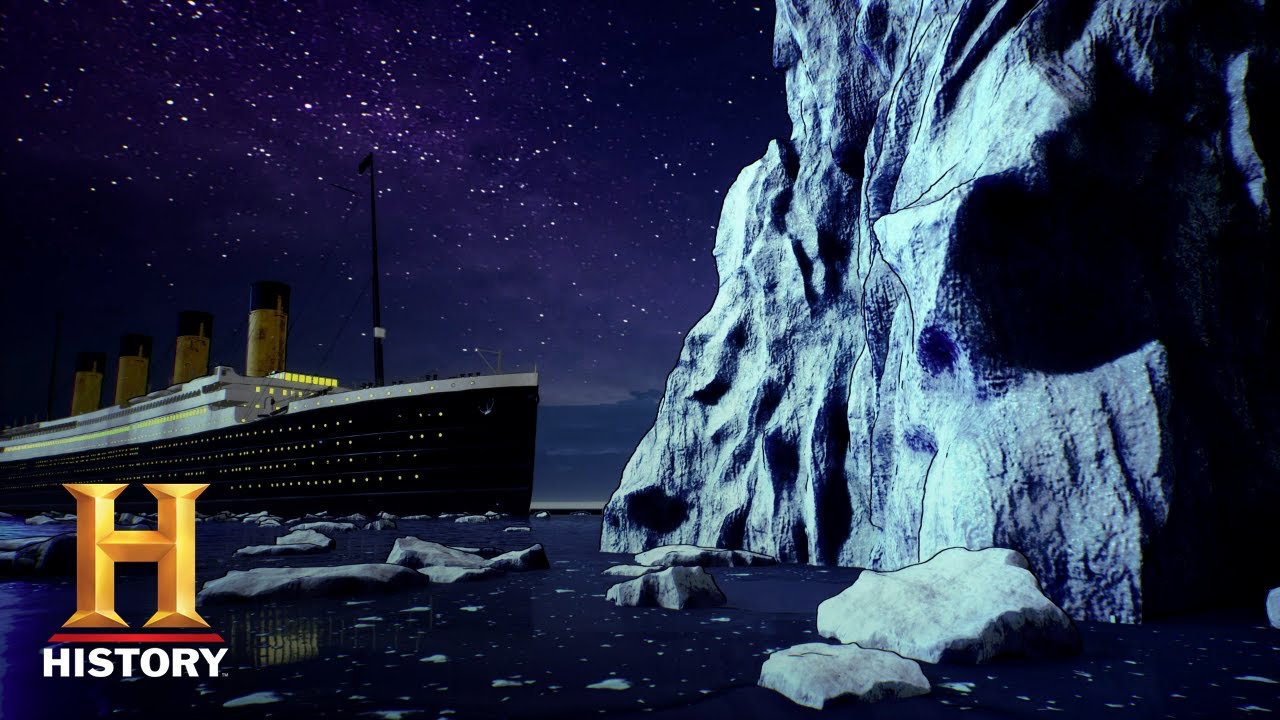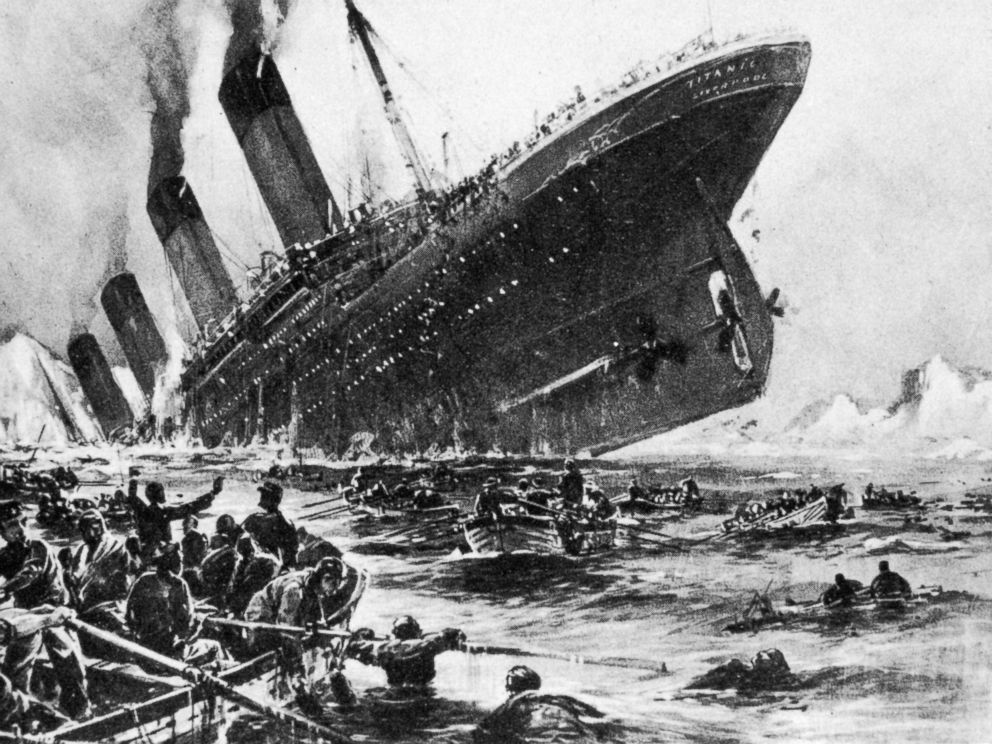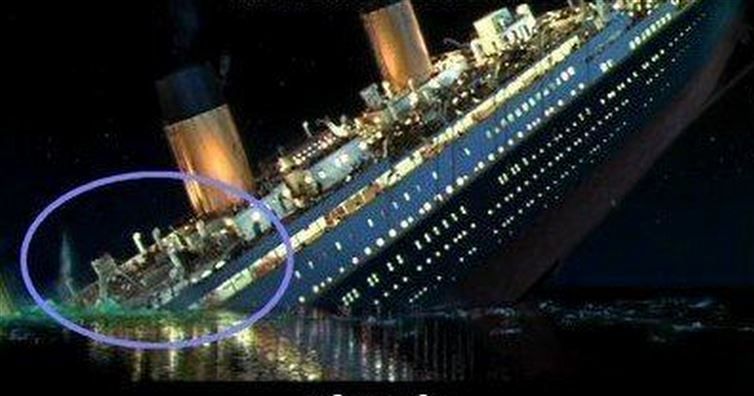The sinking of the Titanic has been a topic of fascination for over a century. While countless theories have emerged, scientists specializing in metallurgy have finally determined the fatal flaw that caused the ship to sink. In this blog post, we will explore this fatal mistake and the individuals who received blame for the tragedy. We will also delve into Captain Smith’s last words and the controversy surrounding his actions before the sinking. So, let’s dive in and uncover the truth about the Titanic.

The Tragic Oversight of the Titanic: Understanding its Fatal Flaw
The sinking of the Titanic has been a topic of discussion and debate for over a century. While there have been many theories about what caused the disaster, scientists specializing in metallurgy have concluded that the Titanic’s fatal mistake was in its rivets. The rivets used to construct the ship were made of wrought iron, which was not as strong as steel. This made the hull vulnerable to breaking apart when struck by the iceberg. Additionally, the rivets were not spaced closely enough together, leaving gaps that allowed water to flood in more quickly. This fatal flaw in the design of the Titanic ultimately led to its tragic sinking on April 15, 1912. While there were certainly other factors that contributed to the disaster, such as the lack of lifeboats and the inadequate response to the ice warnings, it was the weakness in the ship’s construction that proved to be its downfall.
>> Must read How much was Rose’s necklace worth?
Assigning Fault for the Sinking of Titanic
Captain Edward Smith was the commanding officer of the Titanic and was therefore held responsible for the disaster that claimed over 1,500 lives. While some have tried to shift the blame to other factors, such as the design of the ship or the lack of lifeboats, Captain Smith has remained a focal point of criticism. This is primarily due to his reputation as a seasoned and experienced captain, as well as his decision to ignore warnings about the presence of ice in the ship’s path.
Rumors have also circulated about Captain Smith’s behavior in the final hours of the Titanic’s voyage. Some have suggested that he was drinking heavily and not fully in control of the situation, while others have speculated that he was attempting to make up for lost time and driving the ship too quickly. However, there is no concrete evidence to support these claims, and they remain the subject of much debate among Titanic historians.
Ultimately, while Captain Smith may have made mistakes in his handling of the Titanic, it is important to remember that he was not solely responsible for the disaster. The sinking of the ship was the result of a complex set of factors, including the ship’s design, the weather conditions at the time of the collision, and the actions of other crew members. Nonetheless, Captain Smith’s role as the ship’s captain ensured that he bore the brunt of the blame in the wake of the tragedy.
Trending now – Do crew members hook up on cruise ships?
Uncovering the Culprit: The Titanic Disaster and Its Key Players.
When it comes to the question of who was most to blame for the Titanic sinking, opinions have been divided. However, since the very beginning, Captain E.J. Smith has been a prime target for blame. Many believed that Smith was responsible for the disaster because he was sailing the Titanic at such a high speed of 22 knots through the iceberg-infested waters of the North Atlantic. There were also rumors that Smith was trying to outdo the White Star sister ship, the Olympic, in terms of crossing time.
The fact that the Titanic was sailing at such a high speed was not the only factor that contributed to the disaster. There were other factors such as the inadequate number of lifeboats, the design flaws of the ship, and the lack of preparation for a disaster of this magnitude. However, it was easier for people to assign blame to an individual rather than the system that allowed such a disaster to occur.
Despite the blame placed on Captain Smith, it is important to note that he was not the only person responsible for the Titanic sinking. There were others who played a role in the events leading up to the disaster, including the crew who failed to spot the iceberg in time and the owners of the Titanic who were more concerned with profit than passenger safety.
In conclusion, while Captain Smith has been blamed for the Titanic sinking, it is vital to understand that there were multiple factors that led to the disaster. It is essential to acknowledge the systemic failures that allowed for such a tragedy to happen and not solely focus on an individual’s actions.

Unveiling the Final Words of Captain Smith – Did He Leave Clues to the Tragic Fate of The Titanic?
Captain Edward John Smith was the captain of the Titanic, who went down with his ship after it hit an iceberg on April 15, 1912. Despite the chaos surrounding him, Captain Smith remained calm and focused on ensuring the safety of his passengers and crew. As the ship began to sink, he is reported to have said, “Be British”, to his crew. This message was a reflection of his unwavering determination and commitment to duty, even in the face of disaster.
Captain Smith’s last words have become a symbol of the courage and resilience of the British people, who faced many challenges during the early part of the 20th century. His message to the crew of the Titanic is a testament to his leadership and the values that he embodied. Despite the tragedy that occurred on the ship, his legacy has lived on, inspiring generations of people to be brave, strong, and true to their principles.
It is important to note that there has been some debate over Captain Smith’s last words, with some sources claiming that he said, “Be British boys, be British.” Regardless of the exact wording, however, there is no doubt that his final message was one of hope and encouragement, urging his crew to stay strong and maintain their sense of duty and responsibility. The fact that he remained at his post until the very end, doing all he could to save lives, is a testament to his bravery and selflessness.
Unraveling the Myths: Investigating the Allegations of Intoxication of the Titanic’s Captain

The sinking of the Titanic in 1912 remains a subject of fascination and intrigue to this day, with many myths and rumors surrounding the disaster. One persistent rumor that has persisted over the years is that the captain of the Titanic, who was 62 years old at the time, was drunk. However, there is no evidence to support this claim. In fact, many historians and experts have pointed out that it would have been highly unlikely for a captain of a ship to be drunk while on duty, especially given the severity of the situation.
It is important to note that the captain of the Titanic, Edward John Smith, was a highly experienced and respected sailor with more than 40 years of experience at sea. He was well-known for his professionalism and dedication to his job, and there is no evidence to suggest that he would have engaged in any behavior that would compromise the safety of his passengers and crew.
Despite the lack of evidence to support the claim that the captain of the Titanic was drunk, the myth persists to this day. It is likely that the rumor originated from the fact that the Titanic was carrying a large amount of alcohol, which was intended for the use of the first-class passengers. However, there is no evidence to suggest that the captain or any of the crew members were under the influence of alcohol at the time of the disaster.
In conclusion, while there are many myths and rumors surrounding the sinking of the Titanic, there is no evidence to support the claim that the captain of the ship was drunk. It is important to set the record straight on this issue and to focus on the many other factors that contributed to the tragedy, including the lack of lifeboats, the failure to heed warning signals, and the inability of the ship to withstand the impact of the iceberg.
Uncovering the Titanic’s Ice Warnings: How Many Did They Receive?
The events leading up to the sinking of the Titanic have been the subject of much scrutiny and investigation over the years. One of the key questions that arises is how many warnings the Titanic received about ice in the area on the day of the disaster. Records show that the Titanic received a total of seven iceberg warnings on April 14, 1912.
Of these seven warnings, one message was transmitted from the SS Amerika via the Titanic to the Hydrographic Office in Washington, D.C. This message specifically reported the presence of ice along the route that the Titanic was taking. Despite receiving these warnings, the Titanic continued to sail at a high speed, and did not take sufficient precautions to avoid a collision with an iceberg.
It is important to note that the Titanic was not the only ship sailing in the area at the time, and other ships had reported ice in the area as well. The fact that the Titanic received several warnings about ice highlights the importance of heeding such warnings, especially in hazardous conditions.
The transmission of the ice warnings from the SS Amerika via the Titanic to the Hydrographic Office in Washington, D.C., is an interesting detail that sheds light on the communication systems in place at the time. It is also a reminder of the importance of effective communication and the need to take action in response to warnings and alerts.
The Inexplicable Reason Behind Titanic’s Failure to Detect the Iceberg
The Titanic’s fatal mistake is often attributed to the fact that the crew failed to see the iceberg that ultimately led to the ship’s sinking. This is a fact that has puzzled many historians and maritime experts for years. On that fateful night, the temperature had dropped significantly, and the sea’s surface was incredibly calm, making it difficult to spot any icebergs. However, despite these challenging conditions, Captain Smith decided to maintain the ship’s full speed. The reasoning behind this decision was that the crew would have enough time to react if they saw any icebergs.
It is worth noting that icebergs were relatively common in the North Atlantic during spring, and many ships had reported sighting them in the area. Unfortunately, the Titanic was not so lucky. The crew did not spot the iceberg in time, and it collided with the ship, leading to significant damage to its hull. As we all know, the damage was severe enough to cause the ship to sink, leading to the loss of over 1500 lives.
The decision to maintain full speed despite the challenging conditions is often considered one of the significant contributing factors to the Titanic’s sinking. If the ship had slowed down, the crew might have spotted the iceberg in time, and the collision might have been avoided. However, hindsight is always 20/20, and it is impossible to say for sure what might have happened if the crew had made different decisions. Nevertheless, it is clear that the failure to spot the iceberg was a tragic mistake that ultimately led to the loss of countless lives.
The Responsibility for the Titanic Disaster: Who is Accountable?
When it comes to the question of who is to blame for the Titanic tragedy, there are a number of factors and individuals that come into play. According to survivor Lawrence Beesley, the blame could easily extend beyond just the captain and crew of the ship. In fact, the companies that owned and built the Titanic, the White Star Line and Harland and Wolff, respectively, could be held responsible as well.
The White Star Line was one of the most prominent shipping companies of its time, and it was responsible for the operation of the Titanic. The company had a reputation for providing luxurious accommodations and amenities for its passengers, but this focus on opulence may have come at the expense of safety measures. In addition, the Harland and Wolff shipyard in Belfast, Northern Ireland, where the Titanic was built, could also be held accountable for flaws in the design or construction of the ship.
Of course, the captain and crew of the Titanic also bear responsibility for the disaster. However, it is important to recognize that they were operating within a larger system that may have contributed to the fatal mistakes that were made. Ultimately, determining who is to blame for the Titanic tragedy is a complex and multifaceted question that requires a closer examination of the various factors and individuals involved.
The Final Words of the Titanic’s Captain: Unveiling the Last Moments of the Ill-fated Voyage.
Captain Edward John Smith was the captain of the Titanic, and he is widely known for his heroic efforts in the face of tragedy. As the ship began to sink, he did everything in his power to save the lives of his passengers and crew, even staying on board until the very end.
According to reports, Captain Smith’s last words to his crew were “Be British.” It’s a simple phrase, but it speaks volumes about the captain’s character and his commitment to his country and his duty. In a time of crisis, he was calling on his crew to remain calm, stoic, and resolute in the face of danger.
It’s worth noting that some historians have disputed the authenticity of Captain Smith’s final words. Some argue that there is no concrete evidence to support the claim that he said “Be British” before the ship sank. However, even if these words were not spoken, it is clear that the captain remained dedicated to his crew and his ship until the very end.
In the aftermath of the tragedy, there was much debate about who was to blame for the sinking of the Titanic. Some pointed fingers at the captain, suggesting that his decision-making may have played a role in the disaster. However, many others have argued that Captain Smith was simply a victim of circumstance and that he did everything in his power to prevent the sinking of his ship.
Regardless of who is to blame, it’s clear that Captain Smith’s dedication and sacrifice have made him a hero in the eyes of many. His final words have become a symbol of British courage and resilience in the face of adversity, and they continue to inspire people around the world today.
The Search for the Titanic Captain: What We Know So Far.
The tragic sinking of the Titanic continues to fascinate people even today, more than a century later. One of the most common questions that arise when discussing this disaster is whether or not the captain was ever found. Unfortunately, the answer to that question is no. Despite extensive search efforts, Captain Edward Smith’s body was never recovered after the Titanic sank on April 15, 1912.
It’s impossible to know for certain what happened to the captain in his final moments. However, it’s clear that he perished along with 1517 others, including passengers and crew members. The exact circumstances surrounding his death remain a mystery.
Given the high-profile nature of the Titanic disaster, it’s not surprising that there were extensive efforts made to locate the captain’s body. Despite this, however, his remains were never found. This adds yet another layer of tragedy to the already devastating event.
In conclusion, while we cannot know for sure what happened to Captain Edward Smith in his final moments, it is known that he perished along with many others when the Titanic sank. His body was never recovered, and it remains one of the many mysteries surrounding this historic disaster.
After years of investigation and research, scientists specializing in metallurgy have found that the Titanic’s fatal mistake was in its rivets. While there have been many speculations about who was to blame for the sinking, it is clear that the tragedy was a result of multiple factors, including human error and technical failures. Captain Smith’s last words and whether he was drunk at the time of the incident remain a topic of debate, but what is certain is that the Titanic received several ice warnings prior to hitting the iceberg. Ultimately, it is important to learn from this tragedy and take measures to prevent similar disasters in the future.


